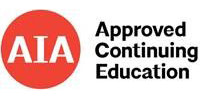
Meeting growing global energy demand, while mitigating climate change and environmental impacts, requires a large-scale transition to clean, sustainable energy systems. Students and professionals around the world must prepare for careers in this future energy landscape, gaining relevant skills and knowledge to expedite the transformation in industry, government and nongovernmental organizations, academia, and nonprofits.
Meeting growing global energy demand, while mitigating climate change and environmental impacts, requires a large-scale transition to clean, sustainable energy systems. Students and professionals around the world must prepare for careers in this future energy landscape, gaining relevant skills and knowledge to expedite the transformation in industry, government and nongovernmental organizations, academia, and nonprofits.
The building sector represents a large percentage of overall energy consumption, and contributes 40% of the carbon emissions driving climate change. Yet buildings also offer opportunities for substantial, economical energy efficiency gains. From retrofit projects to new construction, buildings require a context-specific design process that integrates efficiency strategies and technologies.
In this course, you'll be introduced to a range of technologies and analysis techniques for designing comfortable, resource-efficient buildings.
The primary focus of this course is the study of the thermal and luminous behavior of buildings. You'll examine the basic scientific principles underlying these phenomena, and use computer-aided design software and climate data to explore the role light and energy can play in shaping architecture.
These efficiency design elements are critical to the larger challenge of producing energy for a growing population while reducing carbon emissions.

Sustainable Building Design on edX offers the opportunity for learners who are American Institute of Architecture (AIA) members to earn 22 learning units (LUs/Elective) if they purchase and earn the edX verified certificate for this course.
The MIT Energy Initiative is a registered provider of AIA-approved continuing education under Provider Number 10009794. All registered AIA CES Providers must comply with the AIA Standards for Continuing Education Programs. Any questions or concerns about this provider or this learning program may be sent to AIA CES (cessupport@aia.org or (800) AIA 3837, Option 3).
This learning program is registered with AIA CES for continuing professional education. As such, it does not include content that may be deemed or construed to be an approval or endorsement by the AIA of any material of construction or any method or manner of handling, using, distributing, or dealing in any material or product.
AIA continuing education credit has been reviewed and approved by AIA CES. Learners must complete the entire learning program to receive continuing education credit. AIA continuing education Learning Units earned upon completion of this course will be reported to AIA CES for AIA members. Certificates of Completion for both AIA members and non-AIA members are available upon request.
OpenCourser helps millions of learners each year. People visit us to learn workspace skills, ace their exams, and nurture their curiosity.
Our extensive catalog contains over 50,000 courses and twice as many books. Browse by search, by topic, or even by career interests. We'll match you to the right resources quickly.
Find this site helpful? Tell a friend about us.
We're supported by our community of learners. When you purchase or subscribe to courses and programs or purchase books, we may earn a commission from our partners.
Your purchases help us maintain our catalog and keep our servers humming without ads.
Thank you for supporting OpenCourser.
